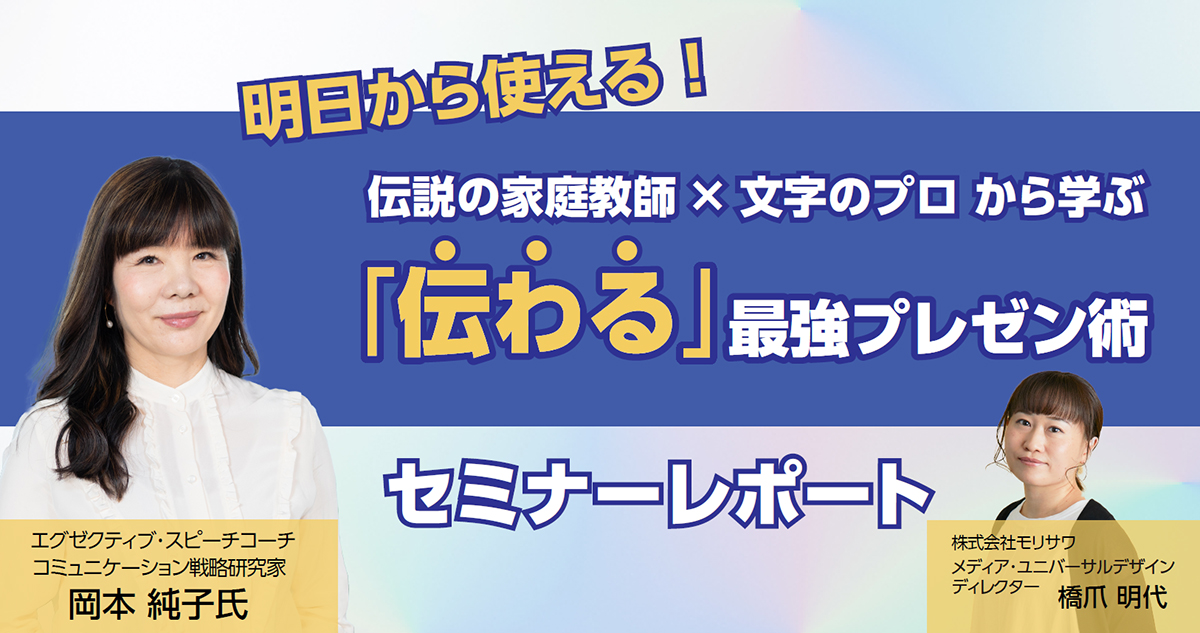
"I'm not good at speaking in front of people..." "I can't communicate my materials well..."
For business people with such concerns,"Start using it tomorrow! Learn the ultimate presentation techniques to get your message across from a legendary tutor and a writing expert" seminarwas held.
This seminar will be held by a communication strategy researcher who has instructed many large company executives and global elites.Junko Okamoto, the "legendary private tutor"and,Akiyo Hashizume of Morisawa Inc., a font and design specialistThey will be speaking at the event, each providing a thorough explanation from their respective fields of expertise on the secrets of creating presentations that will get the message across to your audience, which you can start putting into practice tomorrow!
In this article, we will report on this passionate seminar!
Contents of each session
Presentations are not just about visual information; speaking and communication skills are also very important.
This seminar consisted of a three-part program lasting a total of 90 minutes, in which participants learned about effective presentations from multiple angles from experts Junko Okamoto and Akiyo Hashizume of Morisawa.
Part 1: "Legendary Private Tutor" Junko Okamoto talks about the ultimate presentation techniques of global elites
In the first session, Junko Okamoto imparted a wide range of knowledge and know-how on what to pay attention to when giving a presentation, from the mindset required for public speaking to specific techniques.
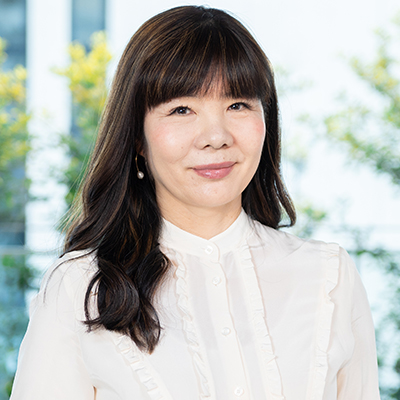
Glocom Co., Ltd. representative Junko Okamoto
Executive Speech Coach
Communication Strategy Researcher
Based on his knowledge of corporate PR and cutting-edge know-how of global standards learned in New York, he is involved in communication coaching and PR consulting for next-generation leaders.the law of nature,He has provided communication coaching for presentations, speeches, and other matters to over 1,000 company presidents and executives, and is known as a "legendary private tutor."
Communication is both a "science" and a "sport"
At the beginning of his speech, Mr. Okamoto stated, "If you can solve your communication problems, you can solve most of the problems in life," urging people to change their attitudes toward communication.
and,He explained that communication is a "science" based on various academic fields such as anthropology, neuroscience, and psychology, and at the same time, it is "like a sport that you learn with your body." He emphasized that anyone can definitely improve.I will.
Three rules for communication
The book explains three important rules of communication that have been derived from years of research.
・Prioritize what you want to hear and know over what you want to say
Communication is like a game of catch. It is important to throw the ball that the other person can receive, not the ball that you want to throw. Focus on the other person's values, relationships, and interests,"Mi-kan-ho-kan (recognize, empathize, praise, be grateful)"He explained using an easy-to-remember mnemonic that it is important to approach the situation with this spirit.
・Emotions over information
He explains that because humans are creatures who make decisions based on emotion, we should not only provide logical information, but also communicate in a way that stirs emotions. Among the three elements of persuasion proposed by Aristotle, "ethos (trustworthiness)," "logos (logic)," and "pathos (emotion),"Emphasizing the importance of "appealing to emotions," something Japanese people are not good at.
"How you say it" is more important than "what you say"
Even if you are saying the same thing, the impression you give to others can change dramatically depending on how you say it. He emphasized the importance of non-verbal communication, such as tone of voice, facial expressions, and gestures, and encouraged people to move away from "low-key speaking."
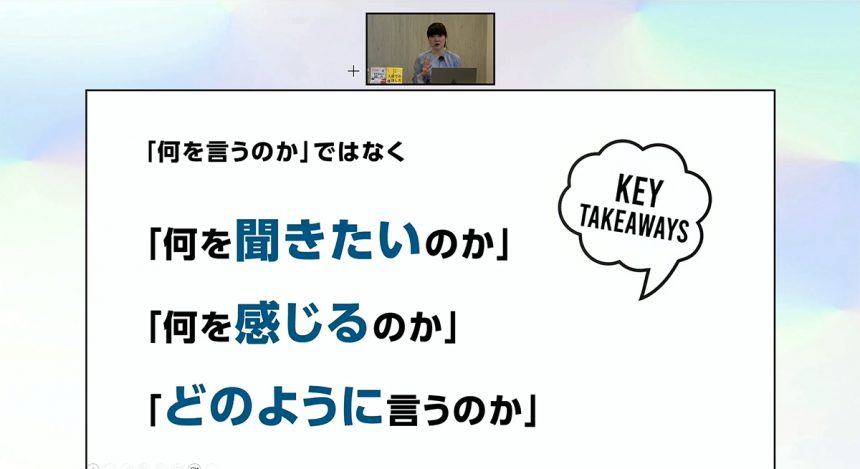
How to create logical content: From the "ladder lottery" method to the "fortune-telling" method
It also explains the content of the talk (logical content).The "ladder game" method leads to vague conclusions and long storiesfrom,The "Omikuji method" of presenting the conclusion firstproposed a conversion to
He introduced specific speaking frameworks such as the "because speaking method," the "problem-solving speaking method," and the "three-part speaking method." He explained the importance of "structuring your speaking style" so that it is easy for the listener to understand and remember.

How to act confidently: The secrets of nonverbal communication
He cited Mehrabian's Law as a way to behave during a presentation.90% of a person's impression is determined by factors other than wordsHe pointed out.Eye contact, gestures, facial expressions, tone of voice, etc., and he taught me some specific techniques.
He particularly emphasized the importance of eye contact with the audience, introducing a technique called the "catchball method," which involves making eye contact with multiple audience members. He also gave specific advice on how to maintain eye contact when working remotely (always being mindful of looking directly at the camera).
moreover,Unique vocal training methods including "The importance of first impressions," "The effect of smiling," "Effective hand usage," and "Saying Yahoo three times."Mr. Okamoto's part came to an end after he shared a wide range of practical know-how.
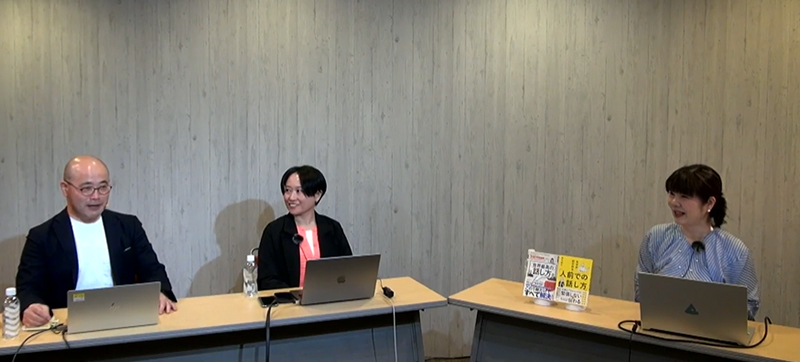
Part 2: Commentary by Morisawa's Akiyo Hashizume
"Is this the reason why your message isn't getting across? Three secrets to creating presentations"
In the second part, Morisawa's Hashizume Akiyo will explain the key points for creating documents that "communicate" effectively.
Choosing fonts that are diverse
First, I would like you to imagine what it would be like if the content of a document or presentation was "not conveyed." In order to improve the visual aspects of these "documents that are difficult to understand," I would like to emphasize that at Morisawa, we teach the secrets of document creation through training and other means.

He also emphasized the importance of creating materials that incorporate diverse perspectives, and recommended using basic fonts (Gothic, Round Gothic) for creating general presentation materials.
Three secrets to creating materials
Using an actual PowerPoint presentation as a subject, you will make corrections while explaining the following three points, and ultimately create a clear, easy-to-read, and well-balanced one-page presentation.
- Organize text information (eliminate duplicate explanations)
- Decide the impression with fonts
- Change the contrast with visual information (font size and weight)
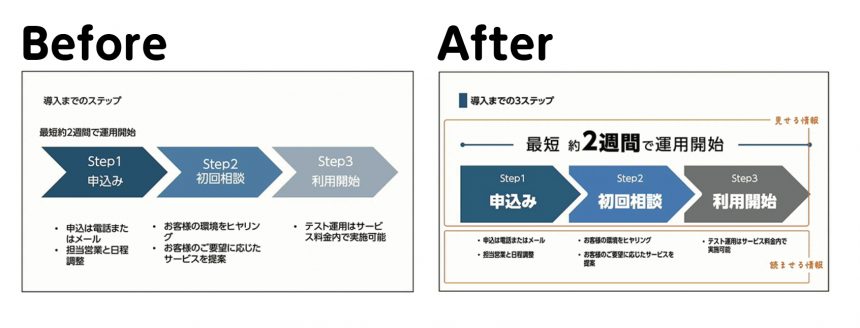
The font used is Gothic, and two weights (thickness of the letters) are used to create contrast.
And this idea is,A "skill" that anyone can acquire by understanding the mechanisms for "communicating" with othersEmphasize that.
Part 3: Special talk and Q&A with Junko Okamoto and Akiyo Hashizume
Finally, Junko Okamoto and Akiyo Hashizume will look back on the entire seminar and discuss the essence of a presentation that "communicates" in a dialogue format.
Skills over talent: Anyone can deliver a presentation that gets the message across
Both Mr. Okamoto and Mr. Hashizume had something in common in what they talked about today:The message was that presentations are not about talent, but by acquiring the skills we learned today, anyone can create materials that communicate well with others and speak in a way that captures their hearts.
Q&A: Professionals answer participants' questions
The two also answered questions submitted in advance by participants during the Q&A session, including the following questions:
Q. Tips for breaking the ice before a presentation
Q. When a presenter requests the creation of materials, what are some tips for effective communication with the creator?
Q. Besides fonts and colors, what else should you consider when presenting to a diverse audience?
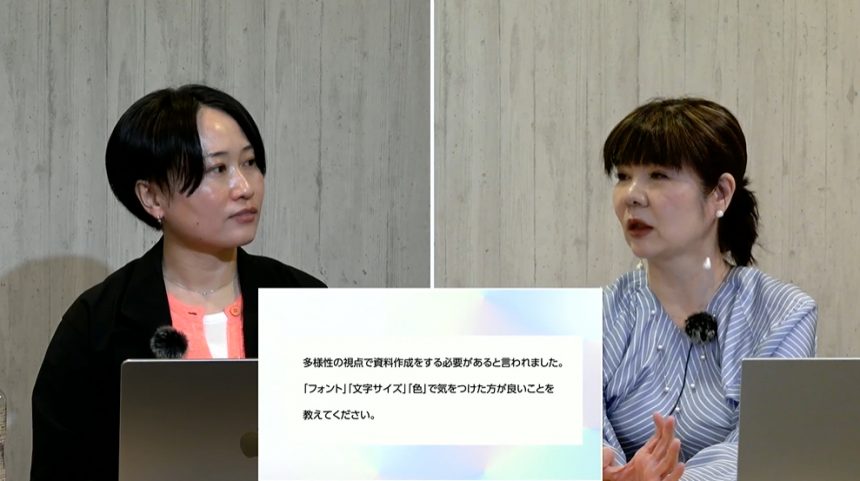
In response to these specific questions, the panelists offered practical advice from their respective professional perspectives.
From Hashizume:"When creating materials, please keep in mind that materials that you can read may not necessarily be readable by the other party. As one option for this, we would like you to use UD fonts," he said, recommending the use of UD fonts in creating materials.I will.
*For details on UD fonts,Morisawa UD Font SitePlease refer to.
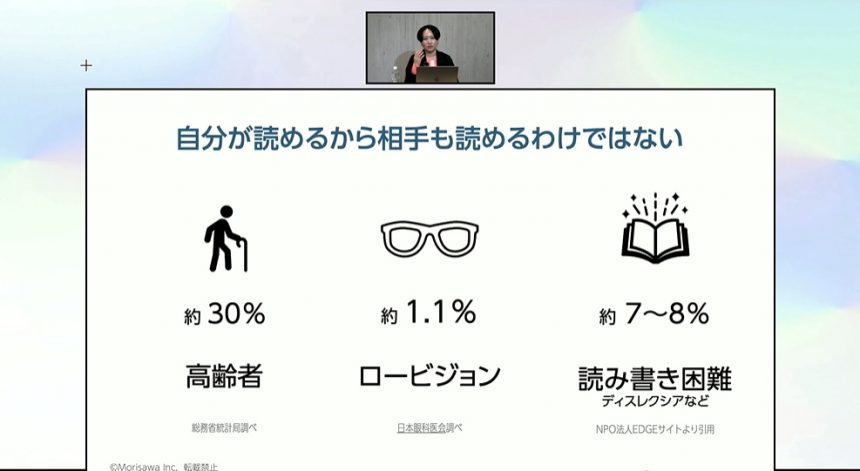
Summary: Start giving presentations that get your point across starting tomorrow!
In this seminar, I was able to learn valuable knowledge and skills for effective presentations from two professionals.Three rules of communication: "How to compose logical content" and "How to behave effectively"and"How to create materials that take diversity into consideration"Please try putting this into practice in your presentations starting tomorrow.
If you are interested in a document design program that "communicates," please check out the website below.
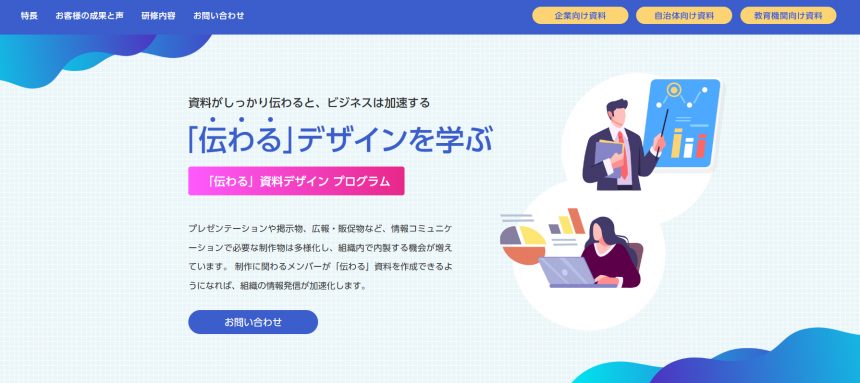
Morisawa will continue to expand the possibilities of fonts and plan seminars and events that contribute to the realization of richer communication.
If you have any questions or inquiries, please contact us using the form below.
Training information: Introducing the past articles of the "Communicative" Material Design Program (with limited-release videos)
Morisawa offers a hands-on learning program for corporate clients on how to design documents that communicate effectively, using Microsoft Office products and that are distributed both internally and externally.
We have published articles about past seminars on the "Communicative" Material Design Program, so please feel free to refer to them as well.
Past articles about the "Communicative" Document Design Program (with exclusive videos) can be found here
Thank you for reading to the end!

